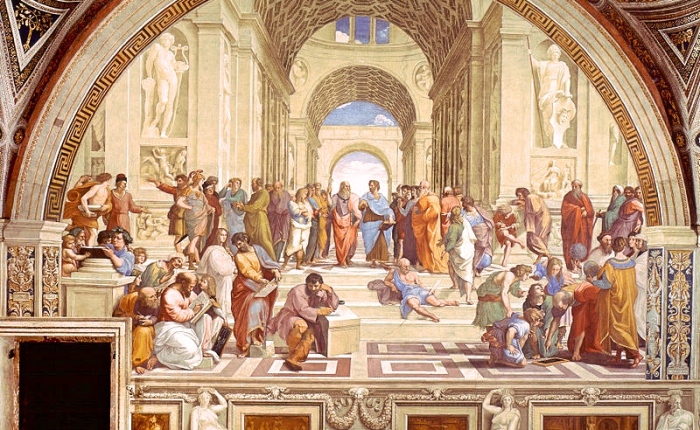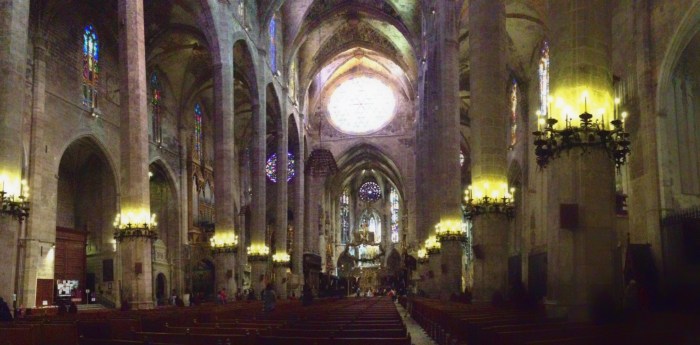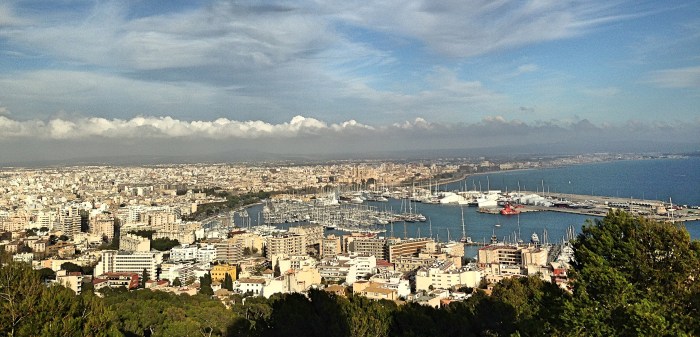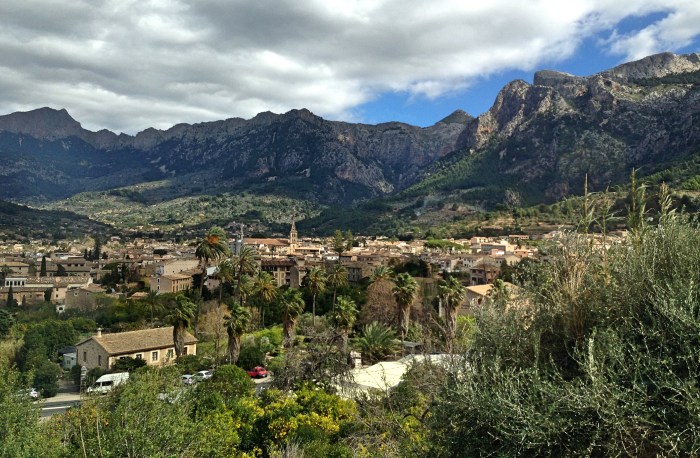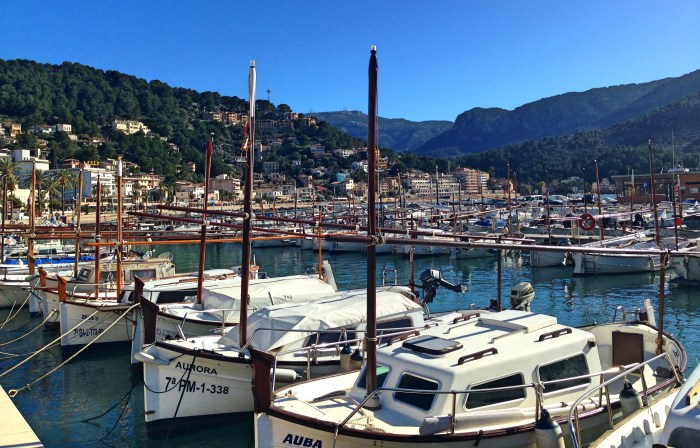Our long delicious winter vacation was coming to a close, but we still had one weekend left. Originally, we planned to stay home and relax; but traveling so much had gotten us addicted. After returning from Ávila, we hastily arranged and booked a trip to Valencia to savor the last gasp of our holiday.
Valencia is the third largest city in Spain after Madrid and Barcelona. It is situated on the Eastern coast of the Iberian Peninsula (a three hour drive from Madrid); and its port has long been, and remains, one of the busiest on the Mediterranean. The city has a deep history; Romans have been mucking around here since well before Christ. The city, as well as the surrounding province, even has its variant of the Catalan language: Valenciano. This language is not just spoken by the people, but it’s officially used; streets are called carrer and not calle here, which confused as we tried to look up the address of our Airbnb.
Our Blablacar driver was a native of that city, and spoke with their characteristic accent. Our fellow passenger was a gato, literally a “cat,” which is the slang term for people whose parents are both from Madrid. This is a lot less common than you might think; most people, if they didn’t themselves move into the city, have at least one parent who did.
Both of them were swell fellows. I tried keeping up with their conversation, but a question I asked inadvertently led them into a deep, energetic political discussion. This was just after the election in Spain, and obviously both of them had a lot to say on the subject. It’s interesting to me how much Spaniards enjoy talking about politics, even among people they hardly know. Americans usually avoid political discussions at all cost, even (or perhaps especially) among family. But these two guys, who had just met, seemed to be having a very deep conversation on the subject.
I wish I understood them. The political situation now in Spain (this was back in early 2016) strikes me as similar in certain respects to that in the States. Particularly, there seems to be a widespread dissatisfaction with the establishment, and this dissatisfaction expressed itself in the formation of two new parties, Podemos and Ciudadanos—something that is unsual for Spain, which has been a two-state country since the establishment of democracy. In the States, this anti-establishment ethos is expressing itself as new candidates rather than new parties, which I think is a consequence of our political system, but I believe the dissatisfaction is the same.

We got to Valencia at around dinner time (for Americans), checked in to our Airbnb—with another welcoming host and another comfortable apartment—and went out to eat. Although we’d only been in the car for three hours, it was about thirty degrees (Fahrenheit) warmer here. We went from winter jackets, scarves, and hats to light sweaters. It was even warm enough to eat outside, underneath a fruit tree laden with the famous Valencian oranges. Partially because of its mountainous terrain, Spain is a land of striking climatic contrasts. Still, it’s hard for me to get used to it. All these climatic zones seem jammed next to one another. In the States, we keep our hot and cold zones far apart.

We woke up the next day ready to experience Valencia. As per our usual routine, we visited the cathedral first. But on the walk there, we couldn’t help noticing the graffiti on the walls. Much of it was the usual stuff, but some of it was really excellent. There were abstract pictures of colored squares, detailed images of batman, and several grotesqueries I can’t adequately describe. Most interesting, though, was the image of a ninja that was painted all over the city, on walls, parking machines, in entrances to stores. I couldn’t help thinking that this ninja had some mysterious significance, that it had been drawn by some shadowy organization as a sign, or perhaps as a clue—but to what?

But perhaps the conspiratorial part of my brain was overactive from seeing the spray-painted slogans of anarchists all over the city. “No king, No God, No Owner. Revolution,” they said, under the symbol of anarchy: an “A” inscribed in a circle.
We got to the cathedral. I have to admit that my memories of this cathedral are pretty hazy; after a while, all cathedrals start blending into one another. The façade was the most pretty and distinctive part. At one entrance, the door is connected to a round wall with three levels; it looks like a section from a Roman amphitheater was just stuck on the side.

Outside the cathedral, in the surrounding plaza, high school boys were skateboarding, a fact that GF found particularly amusing.
“Can you imagine just skateboarding in front of something like this?” she said. “Europe is crazy, man.”
We went inside. Skipping the descriptions of the usual beautiful stuff—the altar, the stained glass windows, and so on—I’ll only mention that the Valencia Cathedral holds the best candidate for the true Holy Grail. Of course, there are many other chalices in Europe which are claimed to be this blessed object, but the opinion of most Christian thinkers and historians is apparently that this one in Valencia is most likely to be the real deal. It’s displayed in one of the cathedral’s chapels, somewhat external to the main area.
I sat in a pew for some minutes looking at it, without having any idea what it was supposed to be. All I saw was a shining gold object, nothing more. It was only after we left and GF looked up the cathedral on her phone that we found out. As often happens, admission came with audioguides; but lately, to practice Spanish, we have been asking for these to be set in Castellano. A consequence of this is that the majority of the time we have no idea what we’re looking at.
Next was the Torre de Serranos, an old fortified gate at the north end of town. Valencia used to be completely surrounded by walls (as were most major cities), but now only a few gates remain. What surprised me most was its height. Compared to the gates of Ávila, this one was absolutely massive. The visit was quick: Pay the fee, climb some stairs, and enjoy the view of Valencia. Perhaps since we’d just visited the castle walls in Ávila a few days before, standing on this tower wasn’t especially engaging. But the view is certainly nice. Valencia, like Madrid, is an interesting mixture of modernity and history. For the most part, it looks like any city in the twenty-first century, with concrete and glass buildings, except for the odd medieval tower popping up here and there.

We descended. It was lunch time now, and we knew what we had to eat: Valencian paella. That most famous of Spanish dishes, paella, originated in this city. Paella is often made with seafood—prawns and oysters and so forth—but, as I was informed by my Valencian Spanish teacher, “paella” with seafood is not true paella at all. To be traditional, it has to made with chicken, rabbit, and vegetables. So that’s what we would eat.
(The Spanish can be very finicky with their food; indeed, they are more puritanical than the Inquisition when it comes to paella. Thus the British chef, Jamie Oliver, got into trouble when he posted a photo of paella he made with chorizo. For whatever reason, this is blasphemous in Spain, and Oliver is dragged over the coals by Spaniards on social media. Ironically, however, according to this article, historically chorizo was used in paella. Personally I like it that way.)
Lucky for us, we usually get hungry for lunch a whole hour before most Spaniards, so we had no trouble getting a seat at a good restaurant. In fact, we were the only two people sitting outside. (As our Airbnb host explained to us, the Valencians have a different view of hot and cold; what was a beautiful day for us was a bit chilly for them.) The food was prompt, the waiter friendly, and the paella delicious.

Stomachs full, we went back towards the Torre de Serranos, and then to the Jardines del Real. The name (Royal Gardens) comes from the royal palace of the erstwhile kings of Valencia that used to occupy the area. The palace was demolished in 1810 during the Napoleonic wars in order to prevent the French from occupying it—a move that had no military justification whatsoever, and was partly motivated by bourgeois resentment of kingly privilege.
But I didn’t know that at the time. All I remembered from my conversation with our Airbnb host was that he said the word “palacio” when he recommended it, which led me to believe that there was still a palace to visit.
“Where’s this damn palace?” I said to GF.
“What palace?”
“I thought there was supposed to be a palace here.”
“Iunno.”
We went from one end of the gardens to the other.
“Maybe it’s outside the gardens?” I said. “Think it’s that thing?” I pointed to a tall building.
“Could be.”
We walked over to the building and looked up. It was a bank.
“Where is it?”
“Just forget it,” GF said. “Let’s go back to the gardens.”
At least the gardens were lovely. Most memorable was a big bird cage in the center, filled with a dozen or so different species of bird, including one lonely rooster. I thought it curious that all the birds congregated in their own corner with their own species.
We sat in a bench for a few minutes to enjoy the Valencian sun. The weather was perfect, though I was having some trouble appreciating it owing to my bitterness from failing to find that damned palace.
Next we went to the Museo de Bellas Artes, also recommended by our Airbnb host. In turn, I’d like to recommend this museum to you, for it was excellent. It’s free to enter; and the collection, though small, is tasteful and impressive. The art is arranged chronologically, with the oldest works near the entrance on the first floor and the most recent by the exit on the second. I enjoyed the older paintings the most. There’ is something about Medieval art, a certain simple tenderness, almost naïveté, that I find especially moving. No attempt is made at realism. The often disproportionate figures, with heads and bodies turned at unnatural angles, stand in an flat space with a gold background.

What’s more, the scenes depicted are often bizarre. One typical example is a portrait of Luke the Evangelist seated before the Virgin, writing his Gospel. The only reason you can tell it’s Luke (the faces are hardly individualized) is because there is a little, tiny bull, the symbol of Luke, pointing with his hoof at the page; the bull even has a halo. Apparently, to the Medieval mind this was not at all strange.
Upstairs there was some masterful Renaissance paintings, including one by El Greco and Velazquez. The difference between the gothic and the Renaissance era paintings is stark. Faces are individualized, bodies are solid, shadow is used to create a sense of space, and perspective transforms the two-dimensional flatland into a three-dimensional world. Medieval paintings are symbols, whereas these are representations. What happened to the European mind to create this huge shift?
We had seen nearly everything in an hour or so, and decided to leave. On our walk out, I noticed a painting of Jesus pouring blood out of the wound into a golden bowl, from which two lambs were drinking. Now, I’ve seen morbid Catholic art before, but this gives me goosebumps.
By the time we walked outside, the sun was setting. We decided that we’d walk down the Jardín del Turia. This is a long park that runs through the center of Valencia. It sits built in a riverbed of the river Turia. Like many major cities, such as Zaragoza and Seville, Valencia grew up along the banks of a river. But unlike those cities, Valencia’s river no longer exists. It was diverted from its course after it flooded in 1957, causing major damage to Valencia. Now the riverbed is home to a park, and quite a pretty one.
It winds its riverine way through town, below street-level, filled with trees, gardens, and ponds. Bridges transport cars and pedestrians overhead. The park was beautiful, but quite long—or at least we thought so, having by now been walking all day. We walked and walked, our feet sore, hoping to get to the end of the park so we could see the sunset on the beach. But we didn’t have enough time, or else underestimated the distance, and the sun had almost totally set before we reached the end.
This didn’t matter so much, for the park was nice enough. Garden after garden went by; palm trees swayed gently above. Pedestrians crowded the sidewalk; kids were skateboarding; adults were bicycling. Eventually we walked through a gate and into a gigantic playground. It must be the biggest playground I’ve ever seen. Instead of a jungle-gym, swings, a slide, or any of that, there was a massive plastic statue of Gulliver, tied down to the ground by the Lilliputians. His body was the playground; kids slid down his stomach, climbed up his cheeks, jumped on his belly button.

There’s something almost sacred about playgrounds. It’s a space that the community devotes purely to enjoyment. Kids from all backgrounds, rich and poor, natives or immigrants, are equal (or nearly so) in this plastic wonderland. They are happy just to run around and feel their legs, to shout and hear their voice. Only the severest misanthrope could remain cold at the sight.
Now it was dark; the day was over. Completely exhausted by now, we walked back to our apartment, had dinner at a burger place, and slept. We still had another half-day in Valencia.
§

Our first and only stop for Sunday was the Oceanographic, the largest aquarium in Europe. (TripAdvisor ranks it as the fourth best aquarium in the world; the best is in Lisbon.) It sits at the end of the Jardín del Turia, one of the buildings in the Ciudad de las Artes y las Ciencias, the City of Arts and Sciences, a collection of museums, galleries, and other high-minded institutions.

This complex is one of the biggest tourist attractions in Valencia, and for good reason. Here, the Spaniards’ flair for modern architecture is on full display. Every building is given a futuristic design, looking like sea shells, tulip bulbs, shark fins, and other shapes too difficult to describe. The buildings are sleek and shiny, covered in reflective glass and girded with bands of metal. There is a planetarium, a science museum, a theater, and of course the oceanographic—which was designed to have the layout of a water lily.
The only bad part of our visit was paying the entrance fee, which was surprisingly steep. I suppose it costs a lot to maintain all these animals. It hurt to fork over the money, but in retrospect it was well worth it.
Our tickets came with a dolphin show; and the next one was starting almost immediately. We headed to the dolphin theater and found seats, high up so we didn’t get splashed. The show began, and immediately became very cheesy. Dance music started playing, and the announcer’s tone and manner were so exaggerated it felt like a WWE commercial.

The show began. It was exactly what I expected. Dolphins flipped, jumped, did backflips, swam backwards, and then towed around their trainers in the water like little speed boats. Simply for their physical ability, dolphins are impressive animals. Imagine how much force it takes to accelerate a dolphin fast enough to shoot straight out of the water to snatch a fish dangling from a fifteen foot ladder. Their whole body must be one giant muscle.
Two things bothered me as I watched the show. First, I had just re-watched the movie version of The Hitchhiker’s Guide to the Galaxy, a pretty mediocre adaptation, but which does start with a musical version of “So Long, and Thanks for all the Fish,” and now I couldn’t get it out of my head. Then, I remembered this quote from the book:
For instance, on the planet earth, man had always assumed that he was more intelligent than dolphins because he had achieved so much—the wheel, New York, wars, and so on—whilst all the dolphins had ever done was to muck about in the water having a good time. But conversely, the dolphins had always believed they were far more intelligent than man—for precisely the same reasons.
Second, I kept thinking that there was something morally questionable about the whole affair. As evinced by the show, dolphins are smart—very smart. Consider this: A dolphin can watch a human spin around on land, and then translate that movement to its own quite different body in the water. Monkey see, monkey do is not a sign of stupidity, but of intelligence. Imitation is a sophisticated cognitive task. And dolphins are not only smart, but highly social; like dogs and humans, they live in groups with their own hierarchies.
What’s the morality of keeping a creature like this in an aquarium? Do they get bored swimming around their pools? Do they get listless and depressed being isolated from the ocean? Does the loud music and the applause of the show bother them? I don’t know. The strongest argument I know in favor of keeping intelligent mammals in zoos is utilitarian: Yes, maybe they’re less happy here, but they’re safe; and besides, the publicity and good-feeling generated from zoos and aquariums makes people more likely to donate to charities and to set up nature reserves. So maybe the benefits outweigh the drawbacks. And perhaps the dolphins enjoy the exercise of performing and the bonds with their trainers? Still, I couldn’t shake the feeling that this show was questionable.
This led me to a deeper question: What is intelligence, anyway? How do you define it? Is it a measure of the complexity of tasks the brain can perform? Yet spider webs are enormously complex, yet we don’t think of spiders as intelligent. A spider does not need to be a chemical genius to synthesize silk. Perhaps intelligence is the ability to learn? This seems like a better definition. Humans, the smartest of animals (we think), are also the most adaptable; we can learn to make new technology, and then use this technology to live in new environments. Chimps can learn to use tools and even to use sign language; dolphins can be trained to perform like this.
The show ended, and we left to see the rest. The aquarium is divided into ten sections, each one a different natural habitat. Here are some of the highlights
One of the tanks was for the seals. They are lovely creatures, so dog-like that you can imagine keeping one in your backyard pool. As I looked at the seals, though, the same pang of unease shot through me as when I saw the dolphin show. They must be bored swimming around that cage all day and all night long. And having people point and gawk can’t be pleasant. Case in point, a little girl next to me began throwing a yellow toy—one of those minions from that Pixar movie—up and down, and a curious seal on the other side of the glass began following it. The seal even tried to snap at the toy, like it was a fish; though of course his teeth just bounced off the glass. The kid’s parents thought this was cute and neat, and I admit it was kind of cute. But it also seemed a bit cruel, adding insult to injury.
Of course, there were lots of fish. I like looking at fish, but not especially. Have you ever looked into the eyes of a fish? Nothing seems to look back at you. The same goes for birds, for the most part. In one section, under a big netted area which I believe was the wetland habitat, were lots of birds standing about. They were very pretty; but if I spend too much time looking at one I get unsettled. I try imagining what’s going on in their brain, and get nothing.
Also in abundance were lots of strange sea creatures. There were sea horses, those surreal beauties that look like fantasy intruding upon reality. Jellyfish also give me this impression, floating in their tank like plastic wrap, lit up like neon signs against the black background. How bizarre is it that something like this—something I can literally see through—can be alive?

In one cage were two spider crabs. I could hardly believe my eyes, they were so big. And according to the audioguide, they weren’t even fully grown. The two crabs leisurely made their way across the bottom, their thin, spindly legs—perhaps three feet long—supporting their armored body. Their shell must be tough; it seems such a slow-moving, easily visible animal would make easy prey. Less mobile animals also occupied the tanks, star fish and anemones. I find anemones particularly fascinating, since they as immobile as plants but are just as animal as you and me.

More impressive than the individual tanks were the tunnels. The Valencia Oceanographic boasts not one but two display tunnels, through which visitors can walk, surrounded on all sides by ocean creatures. The first tunnel was the more modest, consisting mostly of fish. There was, however, a beautiful bright green monstrous eel, swimming about in one corner. It opened and closed its mouth repeatedly, giving me a close up glimpse of its impressive row of teeth. The audioguide explained that the eel did this to breath better, not as a threat; but I still felt intimidated.
The second tunnel was many times more impressive. This was the deep ocean. It was filled with sharks of all kinds, with long, saw-like snouts, with flattened bodies, and of course the classical, recognizable form, an aquatic death machine swimming above your head. I don’t know anything about sharks except that they are terrifying and strangely beautiful. Also present were sting rays, looking angelic as they glided through the water, flapping their wings.
This brings me to a question: Why don’t the sharks in these tanks eat the fish? Why don’t the big fish eat the little ones? Are aquarium keepers just good at grouping animals in the right way? Or do they keep them well-fed, thus suppressing their instinct to hunt? There must be some art or science to it, since I’ve not once seen a shark even attempt a nibble. And I find this impressive, because if I was a big, mean shark floating around a tank all day with a slow, juicy fish, eventually my self-control would fail me.
As great as this shark-tunnel was, the most impressive section of the aquarium was the arctic region. It was there I saw the first living walrus I’ve ever seen—two of them. For such fat, fleshy creatures, they’re astonishingly graceful in the water, like mustachioed ballerinas. Even more astonishing were the belugas. These white whales are midway in size between dolphins and orcas—which means they’re quite large, dwarfing even the walruses. They’re cute, too, seeming to have a constantly inquisitive smile on their faces.
The chubbiness of both animals, walrus and beluga, is visible evidence of the harsh, freezing environment they’ve adapted to. It boggles my mind that these two huge creatures, which doubtless require enormous amounts of food to survive, have managed to arise in such an apparently barren environment. Natural selection works wonders.
Now, we were done. We had a Blablacar to catch. We ate some overpriced food from one of the aquarium cafes, and scrammed.
I can’t end this post without a description of our ride back to Madrid. We traveled with three others—the driver and two of his friends. All of them were Spaniards. The driver spoke excellent English. He had learned English from serving in Eurocorps, where he used English to communicate with his fellow soldiers from Poland. As a consequence, he spoke with an absurd and hilarious Polish accent, even using Eastern European mannerisms.
“Yes, yes, you speak English, very good!” he yelled back at us, as we spoke with one of his friends. “You make friends! A’right!”
This friend of his, who sat in the back with us for the ride, was a professional bodybuilder. The poor guy had to constantly be on a special diet, which I think gave him a food obsession. He couldn’t stop talking about how he wanted to go to Chicago to try the deep dish pizza.
“Oh my God!” he said, showing us a picture of the pizza on his phone. “Can you believe this? We have to go!”
“Oh, you like pizza?”
“Like pizza? I love it!”
“Have you ever been to New York?”
“Yes, it was magical. And there I had the best pizza of my life. It was from Dominoes. Amazing!”
The poor man.
Now our vacation really was over. Next morning, we would have to drag ourselves back to work, after not working for three whole weeks. It was an awful shock. But in the meantime, we had visited nine fantastic Spanish cities. I’ve never had a better break.
 What’s Up with Catalonia? by Liz Castro
What’s Up with Catalonia? by Liz Castro



